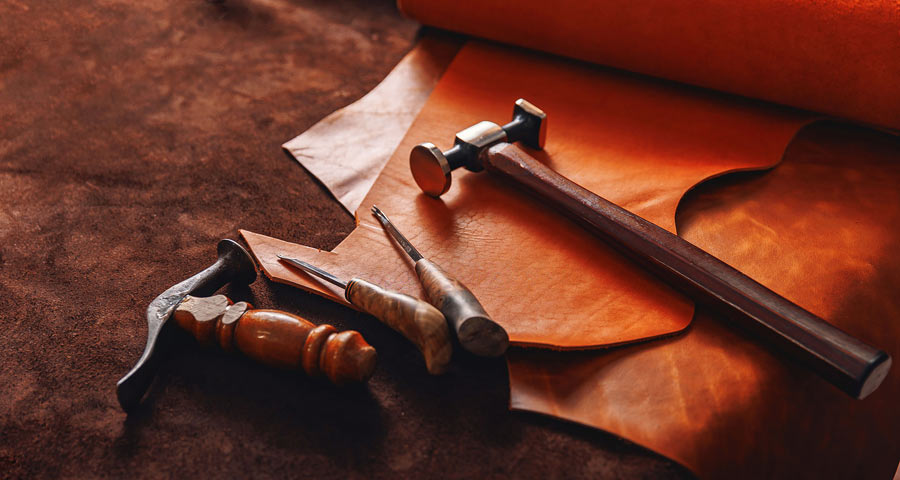
28 Jul How Is Customization Shaping the Future of Leather Goods? Meeting Demand with Advanced Techniques
Customization is more than just a trend—it’s become a cornerstone of consumer preferences, especially in the leather goods industry. People want products that reflect their personality, style, and unique needs. Advanced techniques and technologies are stepping up to meet this demand, revolutionizing how leather goods are designed, produced, and delivered. Let’s dive into how customization is shaping the future of leather goods and the innovative methods making it possible.
Personalized Design Options
The beauty of customization lies in the ability to create something truly unique. From monogramming to bespoke designs, the range of personalized options is vast. Monogramming allows customers to add their initials to wallets, handbags, and belts, giving their items a personal touch. Beyond initials, bespoke designs offer even greater personalization, allowing customers to choose everything from the color and type of leather to the hardware and stitching style.
These options cater to individual tastes and preferences, ensuring that each piece is a perfect reflection of its owner. Whether it’s a custom-ordered handbag that matches a favorite outfit or a leather jacket tailored to exact measurements, personalized leather goods are the epitome of luxury and individuality.
Advanced Laser Engraving and Embossing
Modern technology has taken customization to new heights with advanced laser engraving and embossing machines. These tools enable craftsmen to create intricate designs that would be nearly impossible to achieve by hand. Laser engraving can etch detailed patterns, logos, and even artwork onto leather, providing a high level of precision and consistency. Embossing, on the other hand, adds a three-dimensional element to designs, creating textures and patterns that stand out.
These techniques allow for a high degree of personalization, making each piece unique. Imagine a leather wallet with a beautifully engraved floral pattern or a belt embossed with a custom design that tells a personal story. The possibilities are endless, and the results are always stunning.
Custom Fit and Tailoring Services
When it comes to leather goods like shoes and bags, fit and comfort are just as important as style. Custom fit services are increasingly popular, offering tailored products that meet individual measurements and specifications. Technologies like 3D scanning and CAD (Computer-Aided Design) are revolutionizing this aspect of customization.
3D scanning captures precise measurements of a customer’s feet or body, which can then be used to create perfectly fitting shoes or jackets. CAD software assists in designing these custom products, ensuring accuracy and efficiency in the manufacturing process. This blend of traditional craftsmanship and modern technology ensures that every piece not only looks great but feels great too.
On-Demand Manufacturing and Just-in-Time Production
On-demand manufacturing is another innovative approach that’s transforming the leather industry. This method involves producing items only when an order is placed, rather than maintaining large inventories. This approach minimizes waste, optimizes inventory management, and ensures that each product is made to the exact specifications of the customer.
Advanced production techniques like digital pattern making and automated cutting streamline the process, allowing for quick turnaround times without compromising on quality. This just-in-time production model is both economically and environmentally beneficial, reducing excess inventory and waste.
Integration of Digital Platforms for Customization
The digital age has brought customization to our fingertips. Online platforms and apps now facilitate custom orders, making the process simpler and more accessible for consumers. Customers can use these platforms to design their leather goods, selecting options for color, material, size, and personalized details.
These digital interfaces often include 3D previews, allowing customers to see their designs from all angles before finalizing their orders. This not only enhances the shopping experience but also ensures that customers get exactly what they want. The ease of use and interactive nature of these platforms are significant factors in the growing popularity of customized leather goods.
Sustainability and Ethical Considerations
Customization isn’t just about creating unique products—it’s also about fostering sustainable and ethical practices in leather production. By producing items on demand and to exact specifications, waste is significantly reduced. This approach supports a more sustainable production model, as only the necessary materials are used, and overproduction is minimized.
Moreover, many brands are incorporating eco-friendly materials and fair trade practices into their customization processes. This ensures that the leather is sourced responsibly and that workers are treated fairly and paid justly. The emphasis on sustainability and ethics resonates with today’s consumers, who are increasingly mindful of the environmental and social impact of their purchases.
Conclusion
The transformative impact of customization on the leather goods industry cannot be overstated. Advanced techniques like laser engraving, 3D scanning, and digital platforms are enabling a new level of personalization and precision. At the same time, on-demand manufacturing and sustainable practices are reshaping how these goods are produced, aligning with the values of modern consumers.
Brands and artisans must embrace these advanced techniques to stay competitive and meet the evolving demands of their customers. By doing so, they can offer products that are not only unique and personalized but also sustainably and ethically produced. The future of leather goods lies in customization, where technology and craftsmanship come together to create pieces that are as individual as the people who use them.


